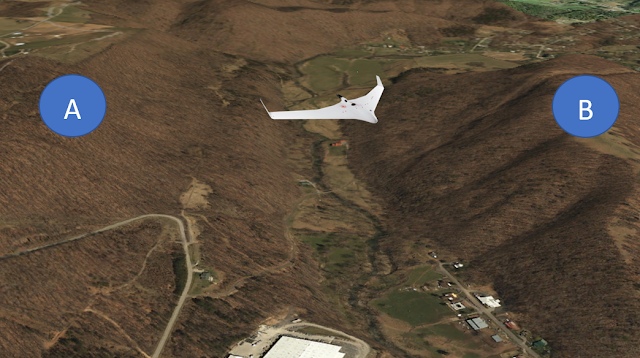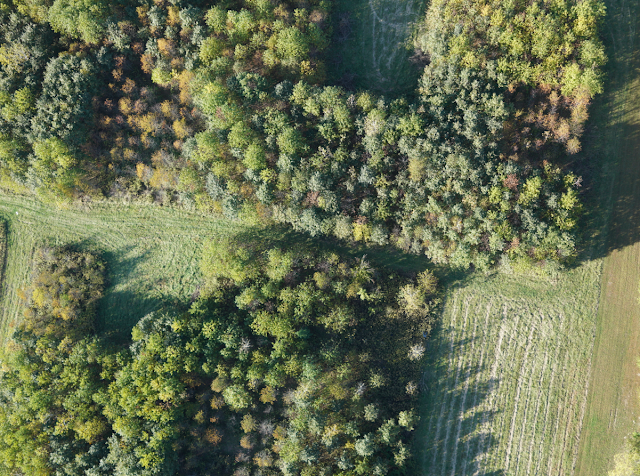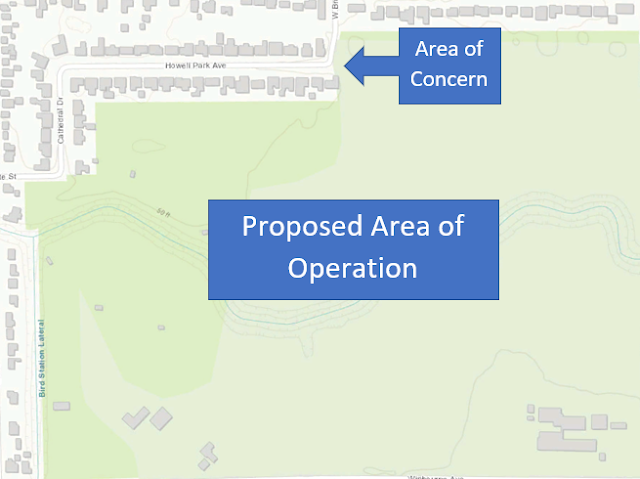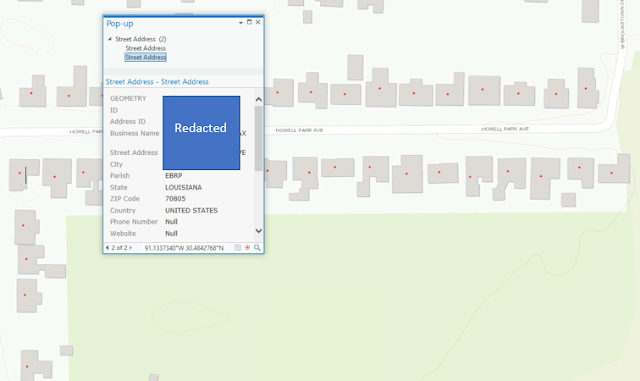Overview
Taken from the Purdue GIS day website, Purdue Libraries hosts a GIS (Geographic Information Systems) Day celebration every November as a local component of a greater international event. In this context, “GIS,” is defined as a collection of software applications, hardware devices and data sensors, that have the capability to generate maps, statistical data, and digital mapping based upon proprietary software and open-sourced workflow. As mentioned in Assignment 4, I am currently in the process of demonstrating how GIS can be applied to planning terrain intense missions with UAV systems such as the C-Astral Bramor PPX. Therefore, the purpose of this post is to provide you an update of discoveries I have made using a variety of tools from Esri Arc Pro.
The Need Proper Mission Planning
Throughout this Capstone Project, proper mission planning is vital to creating a safe and efficient UAS operation. In the context of planning missions in areas deemed difficult or inaccessible for humans, using GIS to plan UAS missions can save the client an immense amount of time and money before the UAS team arrives on sight. Why? Throughout my experiences operating UAS missions, there is usually an unknown variable that can cause the mission to take longer than the anticipated time. Wouldn't it be nice to mitigate most of the unknowns on a computer screen rather than climbing a mountain?
The Tools I have Tested for Mission Planning
From an in the office mission planning perspective, I believe simple tools used in ArcGis Pro can help you determine issues such as learning elevation values, anticipating greater obstacles, and accounting for FAA Regulations. Although some of these items may be retrieved from Google Earth, ArcGIS Pro is the only software that can provide analysis of the environment without having to search different websites. To learn more, take a look the tools that I have used to combat common UAS related Problems.
1) Classifying Terrain Values from A Clipped Raster. The Problem: Depicted in Figure 1 are two areas of elevated terrain, from standing at Mountain A, you think that your UAV can fly directly over an area of interest at Mountain B. Aside from testing this theory on the field, how can you guarantee the UAV doesn't crash on the side of Mountain B?
 |
Figure 1: Can the UAV make it to Point B without Crashing?
The Solution: Classify the image to derive values from the Terrain. Depicted in Figure 2 (at a slightly different perspective) are values I could identify based on classification from a layer in a summarized elevation feature. Since the layer is from an Elevation Database, the height of the mountains are fairly accurate. Furthermore, the color coordination can help a mission planner instantly focous in an area of interest based on the needs of the mission rather than clicking on random points of the mountain to retive values.
Figure 2: Classifying Elevation Values to Avoid Collition
2) Adding Layers from the USA hydrology database, the USA National Hydrology Database, and the World Terrain reference data base.
The problem: Depicted in Figure 3 is a satellite image of a mountain without overlayed datasets. From a mission planning perspective, it be helpful to answer questions such as;
- Where can I access the mountain via vehicle?
- Do I have to worry about runoff that can be found in valleys?
- Will I be flying over vehicles that can potentially interfere with FAA regulation Part 107.39?
Figure 3: Perspective Without Overlayed Data
|
The Solution: Thanks to overlaying the terrain with different databases, you can easily see access roads, a highway, and areas where water can interfere with mountain access and data collection. Figure 4 makes it significantly more easier determining answers to the questions in the problem.
Figure 4: Perspective With Multiple Datasets
3) Create Profile Views to enhance situational awareness and observer placement
The Problem: Mission planning lacks data to analyze the terrain of a mountain. Using the Profile Geoprocessing tool, you can create lines that can tell you the slope of the mountain at various intervals. Depicted in Figure 5 are red profile lines numbered 1-4.
Figure 5: Red Profile Lines
The Profile lines can then be transcribed to a graph which can help a mission planner determine the various areas of clearance for both the drone and help visual observers know the easier and harder places to access the mountains. Below are the graphs calculated in reference from the profile lines. Notice how the mountain changes shape along with its elevation. *In future data collection, I will compute these values in a single graph.
Figure 6: Profile 1 Graph
Figure 7: Profile 2 Graph
Figure 8: Profile 3 Graph
Figure 9: Profile 4 Graph
4) Use the Viewshed tool to estimate visual line of sight
The Problem: Time and safety are compromised when a UAV cannot be found in the air. Wouldn't it be nice to estimate where to stand before you are on the field? Using the Viewshed tool, you can troubleshoot and estimate optimal pilot and visual observer placement before you climb a mountain to realize that trees are in the way. Depicted in Figure 10 is a red point representing a person who is 5 foot 7 and can see up to 2,000 feet. If the same assumptions are made with the Purple and Black point in Figure 11, who can see the mountain better?
Figure 10: Location of Human at Red Point
With the Viewshed turned on, the Pink area depicts what the human could see at the given elevation in Figure 11.
Figure 11: Estimated Area a Human Can See from Mountain Top
Across the river on the opposite side is the location of the human facing the mountain depicted by the purple and black dot in Figure 12. Demonstrated in Figure 13, notice the estimated greater amount of view the person has represented by the pink color
Figure 12: Location of Human Facing Bottom of Mountain
Figure 14: Estimated Area a Human can see from Bottom of Mountain
Tools that I want to Test for Mission Planning
Currently I am working on a way overlay the layers I have created to the C-Astral Bramor PPX Mission Planning Software (C^2P3). If successful, I can perform a live simulation that will provide a crew customize perspectives to better understand the environment of their mission before they get to the field to operate. Therefore I have more work to do and mission planning can encompass more than the mission itself. For example, depicted in Figure 14 is an area where houses are located as well as what appears to be an area for power lines shown in the red oval.
From a Public Relations standpoint, if you are engaging in a long term UAS operation for a community that is unfamiliar UAVs, wouldn't it be nice to send a courtesy letter to the houses you see below? If it is possible, I am going to attempt to explore GIS programs to see if its possible to gather the addresses of the the neighborhood. Furthermore, power-lines and cellphone towers can be hazardous to UAS operations so I hope to use Arc Pro to see if I can depict power sources or areas of high electromagnetic interference easier.
Figure 15: Neighborhood and Power lines
Conclusion
It is obvious that GIS can have significant advantages to identifying and depicting important items in mission planning. In future posts, I plan to generate a map of an complex terrain mission and show how the data collected from the tools can help answer preplanning questions before the UAS team is deployed on the field. Furthermore I plan to exploit these resources create tutorials on how to use this software for UAS operations specific to the C-Astral Bramor PPX.











































